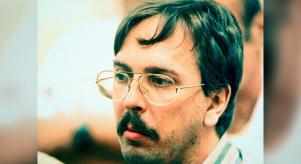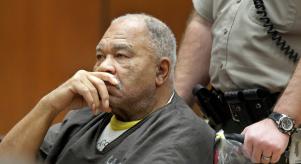
Who killed Malcolm X? The assassination of a civil rights leader
On 21st February 1965, controversial human rights activist Malcolm X was shot multiple times and killed in front of a large, screaming crowd. The 39-year-old African-Muslim minister, who was known for his radical views and being a vocal advocate for Black empowerment, was giving a public address at Manhattan’s Audubon Ballroom.
His brutal assassination sparked an investigation beset by rumours that his killers were members of the Nation of Islam. Malcolm had once been a member himself but later renounced the political and religious movement. Before his murder, he had found himself in increasing conflict with the religious group’s founder and allegedly received death threats.
Three Nation members were charged with the murder and given life sentences. However, speculation about the identity of the real killers has persisted for decades. Over half a century later, new evidence has overturned the original convictions and exonerated two of the men wrongly imprisoned for one of the most infamous murders in America’s modern-day history.
From career criminal to civil rights leader
The story of Malcolm X’s journey is one of the most colourful examples of change, from being a drug-addled criminal, armed robber, and pimp, to an infamous and iconic human rights activist.
His family’s horrific experiences of racism and violence at the hands of white bigots, as well as institutionalised prejudice in the 1920s and 30s, signposts his early volatile trajectory. He first found work as a shoeshine boy and then selling sandwiches, before becoming enmeshed in the underground world of gangsters, dance clubs, and gambling in New York’s notorious ghettos.
Despite his success as a clever and ruthless con artist, the chaotic lifestyle took its toll when he eventually made enemies of other gangsters. The police were also very eager to arrest him.
At just 20, Malcolm Little was sentenced to eight years behind bars at Charlestown Prison. It was while incarcerated that his life was to take a dramatic turn and see him change his name to Malcolm X, (the X symbolising his unknown African name) and become a devotee of Islam, enthused with self-righteousness and a passion to change the lives of Black Americans.
Early Life and Struggles
Weeks before Malcolm Little was born, the torch-carrying nightriders of the Klu Klux Klan, galloped up and surrounded the family home in Omaha, Nebraska. Wielding shotguns and rifles they demanded to see his father, Earl Little, to violently lynch him in full view of his family.
Earl’s heavily pregnant wife, Louise Little, bravely stood in the doorway and defiantly told the racist thugs that she was alone with three small children. The Klan members smashed every window in the house with their rifle butts and warned the family to leave.
Murder of family members
Earl Little was never intimidated, or at least didn’t show it when faced with abuse and threats from racist members of the white community. He had grown up in Georgia, a Southern state where racial tension and violence were a daily occurrence. Three of Earl’s brothers had been murdered by white racists, which inspired him to become an activist.
His views were seen as extreme, as the influential preacher called for Blacks to leave America and establish an independent nation in Africa. They were the kind of opinions and beliefs that were to inspire his son’s controversial public speeches thirty years later.
Malcolm X’s public murder has been one of the most infamous crimes in America’s history, particularly related to the struggle of Black Americans for equality during the tumultuous 50s and 60s.
Miscarriage of Justice
Muhammad A. Aziz and Khalil Islam spent two decades in prison after their 1966 convictions for allegedly killing Malcolm X. Released in 1987, it was only in November 2021 that new evidence proving their innocence finally exonerated them.
After having had their lives ruined by the original convictions, the now 83-year-old Muhammad Aziz is suing the state of New York in a $20m lawsuit for ‘a serious miscarriage of justice’. Khalil Islam, who died in 2009, is posthumously exonerated of the crime. A third man, Mujahid Abdul Halim, now 80, who confessed to the murder, said at the time of the trial that the two other men were innocent. Halim’s conviction still stands.
Gross Misconduct
The 1965 trial disregarded the alibis of Muhammad A. Aziz and Khalil Islam. One witness known only as JM, backed up Mr. Aziz’s alibi, suggesting he was at home nursing a wounded leg at the time of the murder. But this was ignored, along with a lot of other evidence, in what one lawyer in the re-investigation referred to as ‘a product of extreme and gross official misconduct’.
FBI documents at the time included information that implicated other suspects outside of Mr. Aziz and Mr. Islam. Prosecutors also failed to disclose the presence of undercover police officers at the murder scene, as well as a telephone call made to The New York Daily News on the morning of the shooting, indicating that Malcolm X would be assassinated.
New Evidence
The re-investigation found that had the latest evidence been presented during the 1965 trial, Mr. Aziz and Mr. Islam would have been acquitted. Instead, the two men spent decades trying to clear their names. Men who were originally implicated but never charged with murder are now dead, as well as many witnesses. It may be that apart from Mr. Halim who confessed to being involved, the guilty party responsible for Malcolm X’s murder will never be revealed.
The 22-month investigation conducted by the Manhattan district attorney’s office on behalf of the wrongly accused found that prosecutors during the original trial, the FBI and the NYPD had withheld key evidence simply to secure a quick conviction at the expense of two innocent black men.
Cyrus R. Vance Jr, the Manhattan district attorney and one of the nation’s most prominent local prosecutors, apologised on behalf of law enforcement. He acknowledged that Mr. Aziz and Mr. Islam were victims of the kind of racial discrimination that was endemic in the 50s and 60s America. In an interview, he reiterated how the law enforcement agencies had failed the wrongly convicted men and their families.
“They cannot be remedied but what we can do is acknowledge the error, the severity of the error.”
Suspension from Nation of Islam
By the early 1960s, Malcolm X was heading enormous rallies, attended by tens of thousands. He was a deft manipulator of a crowd’s emotions and at one Harlem rally, he made a crowd so angry, that it was thought a riot would break out. His meteoric rise was met with jealousy by some Muslims close to the leader of the Nation of Islam, Elijah Muhammad.
Fed a concoction of lies about Malcolm plotting to take over, paranoia took its grip over Elijah who ordered Malcolm X’s assassination. Malcolm himself felt betrayed by Elijah after discovering the religious leader had used his position to have illicit affairs and father illegitimate children. After Malcolm voiced controversial opinions to the press, Elijah saw the opportunity to suspend him from the organisation. In March 1964, Malcolm announced his split from the Nation of Islam to found his own revolutionary organisation. It was a move that was to make life increasingly dangerous for the controversial activist.
Assassination
Before Malcolm X’s murder, he had travelled the world as a guest speaker but was refused entry to France after French intelligence uncovered a plot to kill him. Flying back from London where he presented lectures, he discovered that his house in New York had been fire-bombed. By this time he was aware his life was in danger. Taking a somewhat pragmatic attitude he resigned himself to the belief that, like his grandfather and father before him, he would die by violence.
On Sunday, 21st February 1965, Malcolm X, having sped up his campaign and having had little sleep for days, was due to make his weekly speech. Despite the threats of assassination plots he ordered his guards not to search the crowd, saying, “If I can’t be safe among my own kind, where can I be?”.
The large crowd assembled at 2pm and as Malcolm greeted them a scuffle in the audience diverted his attention just as three men in the front row stood and took aim. They pumped several volleys of bullets into him, totalling sixteen shotgun pellets.
Malcolm’s middle finger was blown away as he toppled backwards, his head crashing on the stage floor. As the victim’s assistants ran to the stage, the killers fled the hall. Within minutes of being shot, like a firing squad with orders, Malcolm X was dead.
One of the killers, Thomas Hagen, now known by his Islamic name Mujahid Abdul Halim was captured outside the Ballroom and later confessed to having been involved in the assassination. Although a member of the Nation of Islam, there were no proven links to the organisation at the time.
For the two patsies, Muhammad A. Aziz and Khalil Islam, who were wrongly arrested for the murder and spent two decades in prison, their time for justice and to be exonerated of the crime finally came fifty-six years after that violent afternoon in February 1965.








